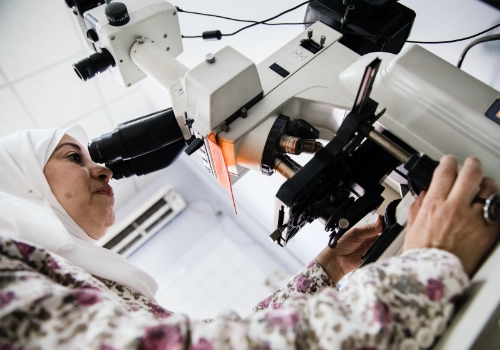COVID-19, and other disease outbreaks, have left a profound imprint on clinical practice.
In the current crisis, countries with established or growing digital foundations have been better positioned to address care delivery challenges, as medical professionals turn to modern technologies for patient management. Digital tools, as a result, have emerged as a vital link in ensuring the continuity of care – especially critical for patients suffering from chronic diseases like cancer.
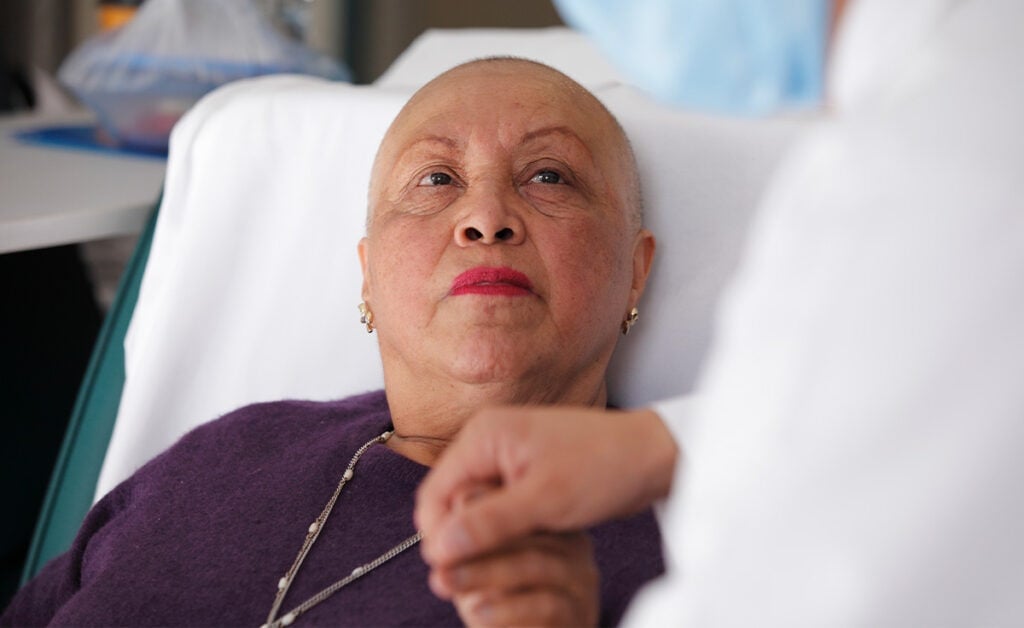
Digitisation is emerging as a vital tool for delivering more effective care to cancer patients.
Maximising Innovation in Cancer Care
Cancer patients, particularly those undergoing chemotherapy who may have compromised immune systems, are at increased risk of COVID-19-related complications and death1.
More broadly, the impact of COVID-19 on cancer service delivery such as screening, diagnosis, treatment and end-of-life care is a concern across Asia-Pacific. Tokyo’s National Cancer Center Hospital halted screening programmes in March 2020, resuming screenings months later2. The Philippines has grappled with organising the transition of cancer care where tertiary centres have been designated as COVID-19 referral centres3.
According to a white paper on cancer preparedness in Asia Pacific: “The identification of appropriate interventions for patients with cancer infected with COVID-19 remains an ongoing challenge.”4
A complex disease like cancer involves a multi-disciplinary team of specialists who come together for what are known as tumour board meetings to review patient information and determine individualised treatment plans for each patient.
With social restrictions brought on by the current pandemic, these in-person meetings are no longer viable. But the use of digital tools such as virtual tumour boards has ensured clinical decisions can be made without disruption.
For cancer patients, this increases their chances of being reviewed and treated sooner — and getting decisive information, quickly.
Bridging Geographical Gaps with Technology
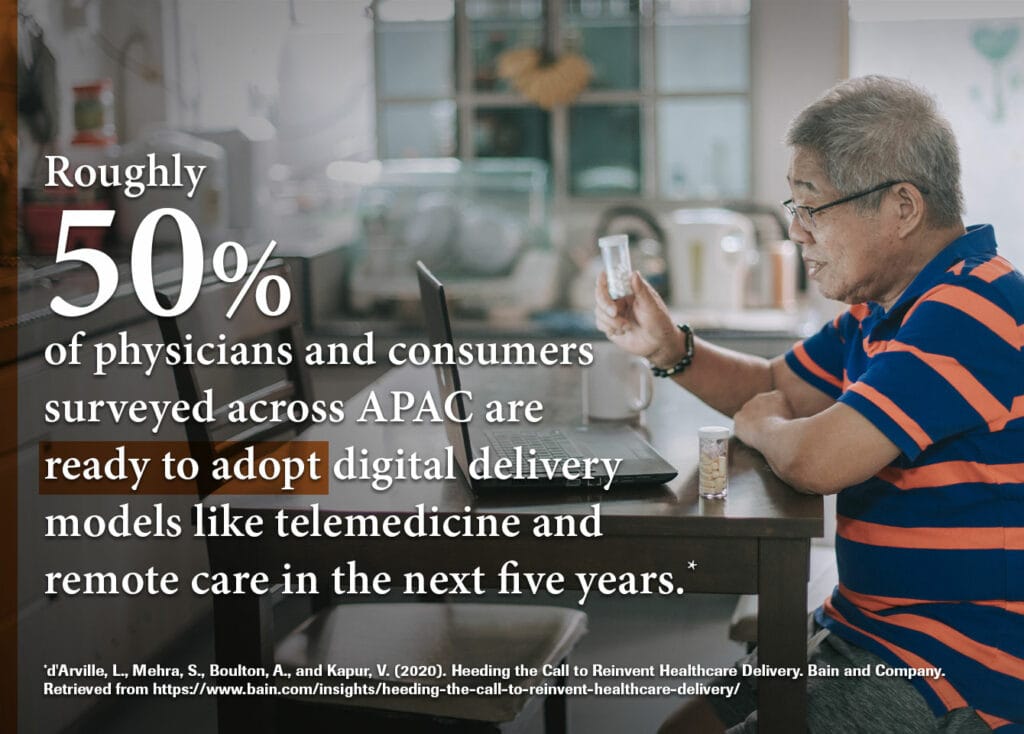
Countries with a widespread geographic expanse like Australia and huge patient numbers like China have seen the accelerated adoption of digital tools to overcome challenges unique to their health systems.
In China, digital colposcopy is widely used to diagnose cervical precancer and cancer patients. This technology, now enhanced with artificial intelligence (AI), helps gynaecologists reach their diagnosis remotely, especially in rural locations like Inner Mongolia where patients have limited healthcare access.
Related read: advancements in cervical cancer protection.
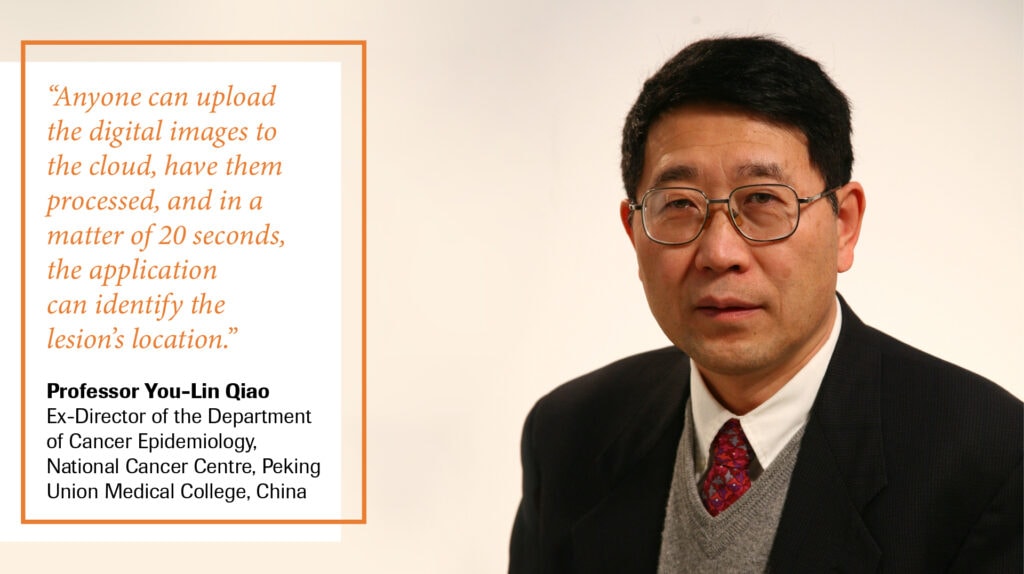
Professor You-Lin Qiao, ex-Director of the Department of Cancer Epidemiology, National Cancer Centre, Peking Union Medical College, China, explains how technology is fostering faster solutions. “We are working with the Shenzhen Women and Children’s Hospital and Tencent on AI-guided digital colposcopy for cervical biopsy. Anyone can upload the digital images to the cloud, have them processed, and in a matter of 20 seconds, the application can identify the lesion’s location and where you should do the biopsy,” he says.
Similarly, Australia has turned to digital solutions to improve patient care. Professor Dominic Dwyer, medical virologist and Director of the Centre for Infectious Diseases and Microbiology Laboratory Services, Westmead Hospital, Australia, shares his experience with digital technology. “Much of my clinical practice is with HIV patients. Most of these patients are stable on treatment, but we recognise there could be a risk of respiratory viruses in the community and we don’t want them to come into the hospital environment or use public transport. The use of digital tools for these patients works very well in this instance.”
In a post-COVID world, is there more to telemedicine than simply replacing physical consultations? “The other benefit of telehealth is it enables doctors to link up with other healthcare professionals involved in the care of a patient,” suggests Professor Dwyer. “When a patient visits a clinic or is admitted to the hospital, you can consult the relevant allied health specialists or other doctors without requiring their physical presence in the same room.”
Innovations in Diagnostics and Disease Management
At the frontlines, technology has proven to be an invaluable asset in the fight against COVID-19. Effective diagnostic tests are equally vital in triaging patients so they may receive treatment early.
For instance, laboratories in Australia are leveraging SMS to reduce turnaround time. The lab can inform a patient directly via SMS if they test negative for the novel coronavirus, compared to the traditional method, whereby doctors needed to communicate that information directly to patients after setting up an appointment or messaging them manually. “With digitalisation, public health units are able to access test results from labs as well as transmit these results to patients faster than before. The earlier an infected patient is notified, the earlier we can perform contact tracing and apply quarantine measures,” explains Professor Dwyer.
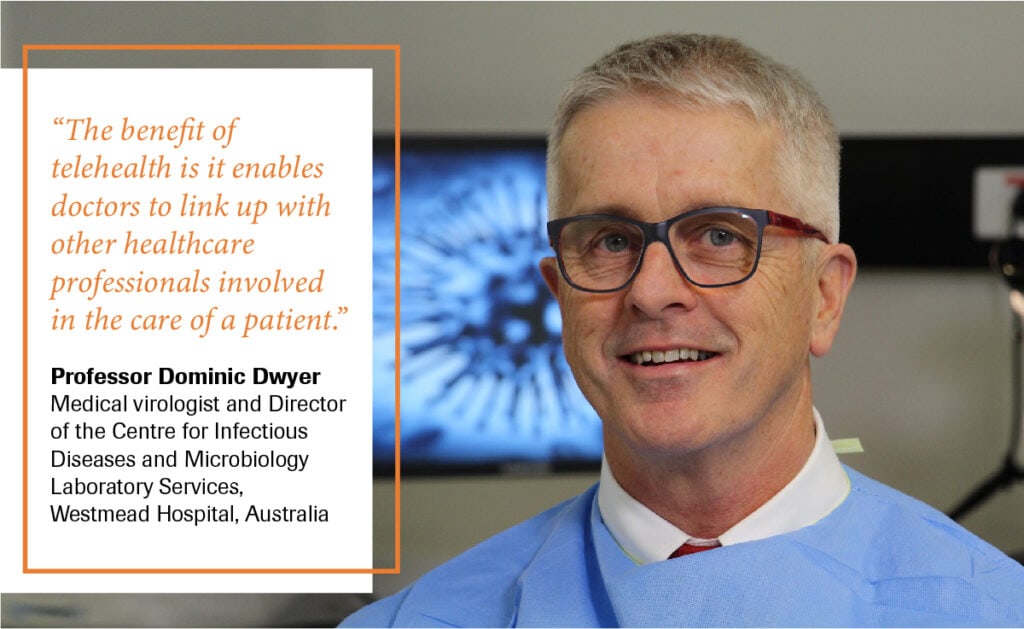
Elsewhere, start-ups are filling the gap to provide fast-turnaround results to travellers. In Singapore Doctor Anywhere, an app that offers video consultation with general practitioners, now also offers PCR swab tests for COVID-19, with results delivered via email within four hours5. Services like this help ensure that as air travel resumes, the spread of COVID-19 from passengers is minimised.
In Thailand, hospitals are harnessing AI and 5G innovations to speed up the diagnosis process. Using technologies like computer vision and AI chips, the AI-assisted medical image analysis service can produce results in just 25 seconds with increased COVID-19 sensitivity of up to 98 percent, compared to conventional imaging examinations which can take up to six hours6.
Digital evolutions like these mean that clinical care is becoming speedier, simpler and more effective — and they are just the initial responses to one of the most trying periods of modern medicine. “Knowledge is key. The sooner we get the sequence of the virus, the sooner we can put diagnostics in place,” notes Professor Dwyer. “The sooner we get the clinical picture, the sooner we can recognise the case and so on. Early and accurate access to knowledge is extremely important.”
Learn more about how digitisation is driving innovative oncology solutions.
References:
1 National Center for Immunization and Respiratory Diseases (NCIRD), Division of Viral Diseases (2020). People With Certain Medical Conditions. Retrieved from: https://www.cdc.gov/coronavirus/2019-ncov/need-extra-precautions/people-with-medical-conditions.html
2 Japan Times (2020). COVID-19 crisis halts cancer screenings in Japan. Retrieved from: https://www.japantimes.co.jp/news/2020/06/08/national/science-health/covid-19-cancer-screenings/
3 Ting, F. I., Sacdalan, D. B., Abarquez, H. S., & Uson, A. J. (2020). Treatment of cancer patients during the COVID-19 pandemic in the Philippines. Ecancermedicalscience, 14, 1040. https://doi.org/10.3332/ecancer.2020.1040
4 Economist Intelligence Unit (2020). Cancer preparedness in Asia-Pacific: Progress towards universal cancer control. Retrieved from: https://worldcancerinitiative.economist.com/pdf/Roche-cancer-preparedness-in-asia/Roche_Cancer_White_paper.pdf
5 Doctor Anywhere (2020). Retrieved from: https://doctoranywhere.com/covid-swab-test/
6 Huawei (2020). Why advances in AI are vital in the fight against Covid-19. Gov Insider. Retrieved from https://govinsider.asia/connected-gov/why-advances-in-ai-are-vital-in-the-fight-against-covid-19/
